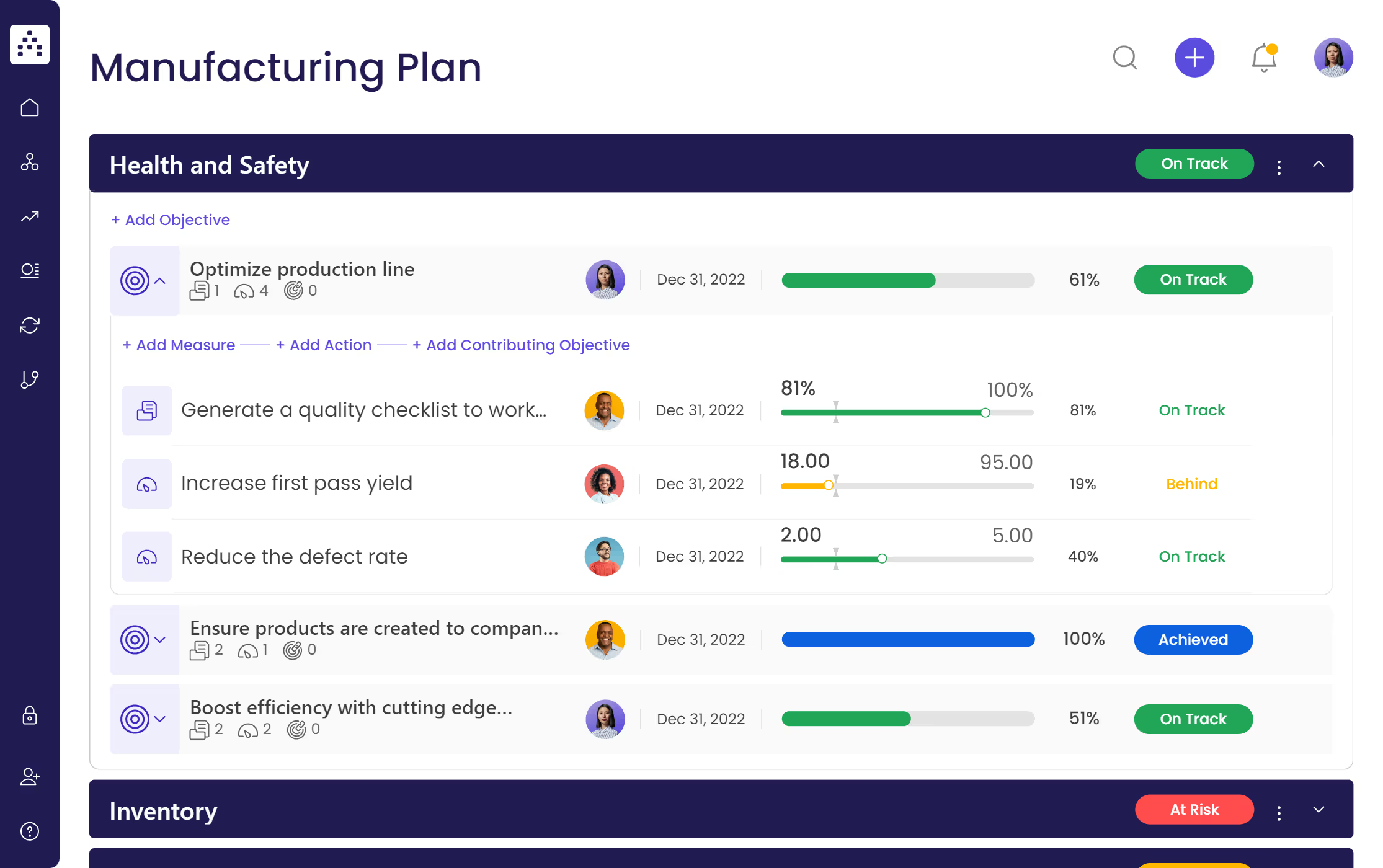What is a Manufacturing Strategy plan?
A Manufacturing Strategy plan helps organizations in different industries to use the resources of a manufacturing system to support the business strategy and achieve long-term organizational goals.
What's included in this Manufacturing Strategy template?
- Manufacturing Strategy vision statement
- 4x Manufacturing Strategy Values
- 4x Manufacturing Strategy Focus Areas
- 12x Manufacturing Strategy Objectives
- 18x Manufacturing Strategy Projects
- 24x Sustainability KPIs
Who is this Manufacturing Strategy plan for?
This Manufacturing Strategy can be used by all departments in an organization with correspondence with the manufacturing industry. Collaboration of all departments in an organization is necessary so that resources can be accordingly delegated to achieve organizational goals.
How is this Manufacturing Strategy template relevant to your organization?
Your organization can use this template to accommodate change and specifically assist in organizing the people and processes within your organization
1. Define clear examples of your focus areas
What types of resources do you want to focus on to achieve your Manufacturing Strategy? What areas do you want to focus on within your organization to achieve these? By discussing and dividing the types of resources you require, your team and you can appropriately come up with areas within the business that you want to focus on.
Examples of focus areas for this Manufacturing Strategy could be Machinery, Inventory, Health and Safety, and People.
2. Think about the objectives that could fall under that focus area
Objectives are subcategories under your focus areas; they help break up your focus area into smaller achievable goals. Usually, you should aim to have no more than 3-4 objectives per focus area. We want objectives to be easy to achieve and setting too many or too little can make you lose your focus on the bigger picture that you are trying to achieve.
Potential objectives for this Manufacturing Strategy plan could be: Improve overall machine performance and efficiency; Monitor inventory to ensure stock is being produced and ordered without a surplus; Reduce wastage and maximize efficiency; Identify training opportunities to upskill the workforce; and Optimize production line (just to name a few).
3. Set yourself measurable targets (KPIs) to tackle the objective
How can you achieve your set objectives? To what extent can your objectives and said goals are tracked and your performance measured? Setting up KPIs that you can follow, measure, and track can help hold your organization accountable down to an individual level.
Examples of KPIs for the Objective Improve overall machine performance and efficiency could be: Increase capacity utilization; Achieve OEE; and reduce machine set up time.
Make sure you set yourself units that you want these KPIs measured in (for instance percentage, dollar, people, etc), as well as achievable and realistic time frames and goals.
4. Implement related projects to achieve the KPIs
How can you achieve these KPIs? What tasks can you carry out and what actions can you take? Devising projects can help your team and you know what activities are being worked on to help achieve your goals.
Examples of a couple of projects to successfully carry out this Manufacturing Strategy plan could be: Implement an employee trainee program; Conduct appraisals; Generate a quality checklist to work on; Carry out stocktake every 2-3 months; Implement inventory tracking (just to name a few).
5. Utilize Cascade tools to track and visualize performance
Besides getting quantifiable data, you can also use Cascade's dashboards to create visual tools and widgets that can help you visually track and monitor your progress. These visual indicators can then advise you of whether you should change your goals by making them more attainable or increase your targets if they are too easy to reach.


